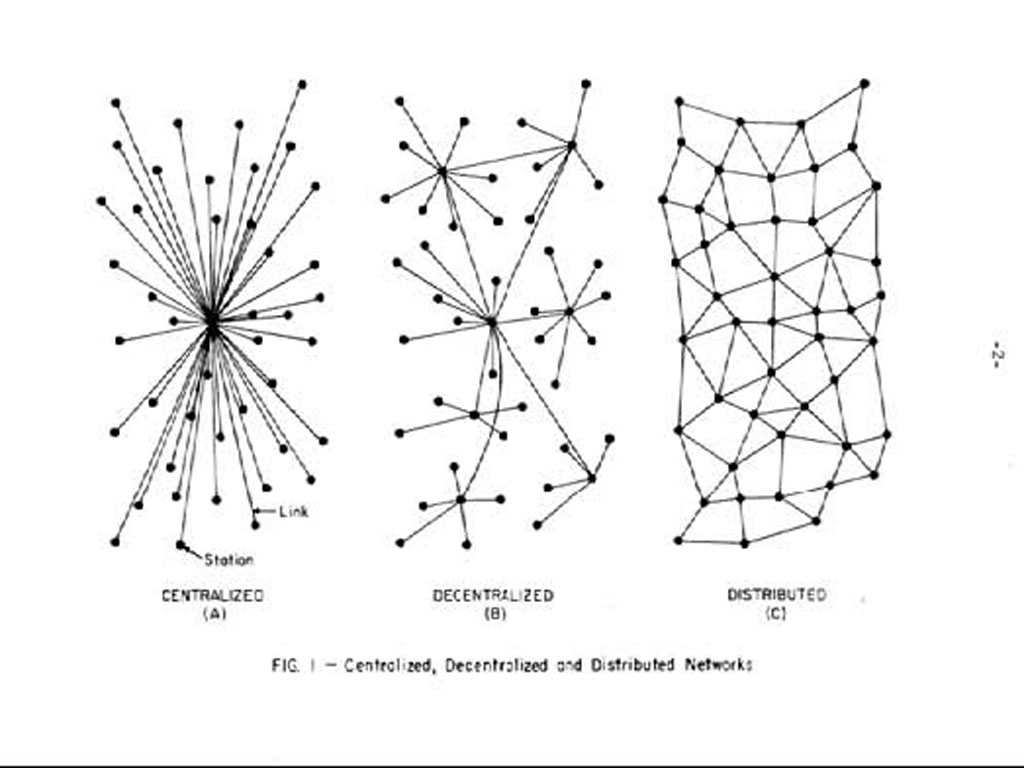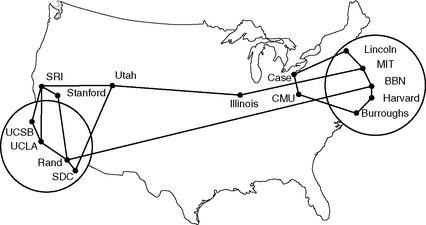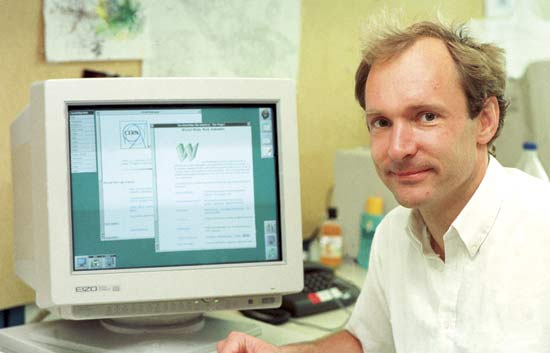Courses/Design & Technique-Essential Web Design/01
<slidy style="aa"/>
The Internet
ARPANET: the first computer network
Context for the creation of the ARPANET
- USA, 1960s
- Cold War - consequences of a nuclear attack
- Soviet Union launched in 1957 Sputnik - the first satellite
- Sputnik trigger a space race between US and the Soviet Union: if the US only had a change to win, if they invested in scientific development.
- ARPANET was created by the Advanced Research Projects Agency (ARPA) (later called DARPA)
Aims for the ARPANET
- create access to remote computers, connected to the network
- be capable of withstanding communications in the face of an attack
- decentralized network
- allow a variety of computers to join the network and be accessed
- foster collaborative scientific research
Characteristics of the ARPANET
- Distributed network: each node connects to more than 1 other node
- destruction of a node would not interrupt communication
Killer App: Email
- At first the network was not heavily used
- It was difficult to access and use the different computers on the network: each its specificities, which one had to learn
- the creation of electronic mail, brought many more users to network, which were simply using to communicate
- the network change from a resource sharing system to a communication system.
Internet: the network that connected networks
- by 1980 several digital networks, were functioning, besides ARPANET both in US and Europe:
- USENET, BITNET, FidoNet (Bulletin Board Network), etc
- these were isolated networks, not connected interconnected.
- the task was to connect this networks
- to the wide and integrated network was given the name Internet
Listen to a radio program on Bulletin Board Networks: 'Wild And Woolly' World Of Bulletin Boards
Documentary "World Brain" [1]
The World Wide Web
A world wide documentation system, sometimes known as the Web, same times as WWW
Context of Web's creation
- conceptualized by Tim Berners-Lee at CERN
- Berners-Lee was frustrated with the difficulty in circulation inside CERN
- diversity of computers with different systems
- large number of projects and individuals
- large amounts of information with not common system for organizing and communicating this information
http://cache.boston.com/universal/site_graphics/blogs/bigpicture/lhc_08_01/lhc11.jpg
Inside one of CERN experiments. Source
Aim: find information
Tim Berners-Lee wanted to create a system that would:
- give access to files in different computers around the world.
- link the files among themselves
- facilitate the location and retrieval of information
"Suppose all the information stored in computers everywhere were linked … Suppose I could program my computer to create a space in which anything could be linked to anything. All the bits of information in every computer at CERN, and on the planet, would be available to me and anyone else. These would be a single information space". [2]
How
Tim Berners-Lee
- devised a system that connected information through link (hypertext)
- created a hyper text language: HTML (Hyper Text Markup Language)
- wrote an interpreter for HTML (that would transform HTML code into visual form): a web browser [3]
- implemented a systems of address - URL - that allowed files in remote computer to be called and reply by sending back a (usually) HTML file.
Result
- The Web became a system where information was easier to find
- users of host computers (servers) could easily decide what they said to the world, and also change it
- users became publishers of content on the Web (not even needing access to a server in order to do it)
- that publishing possibility and will triggered the creation of web publishing services and formats (Geocities, blogs, Tumblrs, Facebook walls ,etc)
- in this context the user is no not only a consumer, but also a producer of content (or publisher)
References, Notes and Optional Reading
- ↑ Degoutin, Stéphane, and Gwenola Wagon. World Brain Stéphane Degoutin & Gwenola Wagon, 2012. http://worldbrain.arte.tv.
- ↑ Berners-Lee, Tim. Weaving the Web. London: TEXERE, 2000.
- ↑ Simulation of the first Web Browser
“The Birth of the Web,” http://home.web.cern.ch/topics/birth-web .
Optional Reading
Stephenson, Neal. “Mother Earth Mother Board.” Wired, http://archive.wired.com/wired/archive/4.12/ffglass_pr.html.
Abbate, Janet. Inventing the Internet. MIT Press, 2000.


